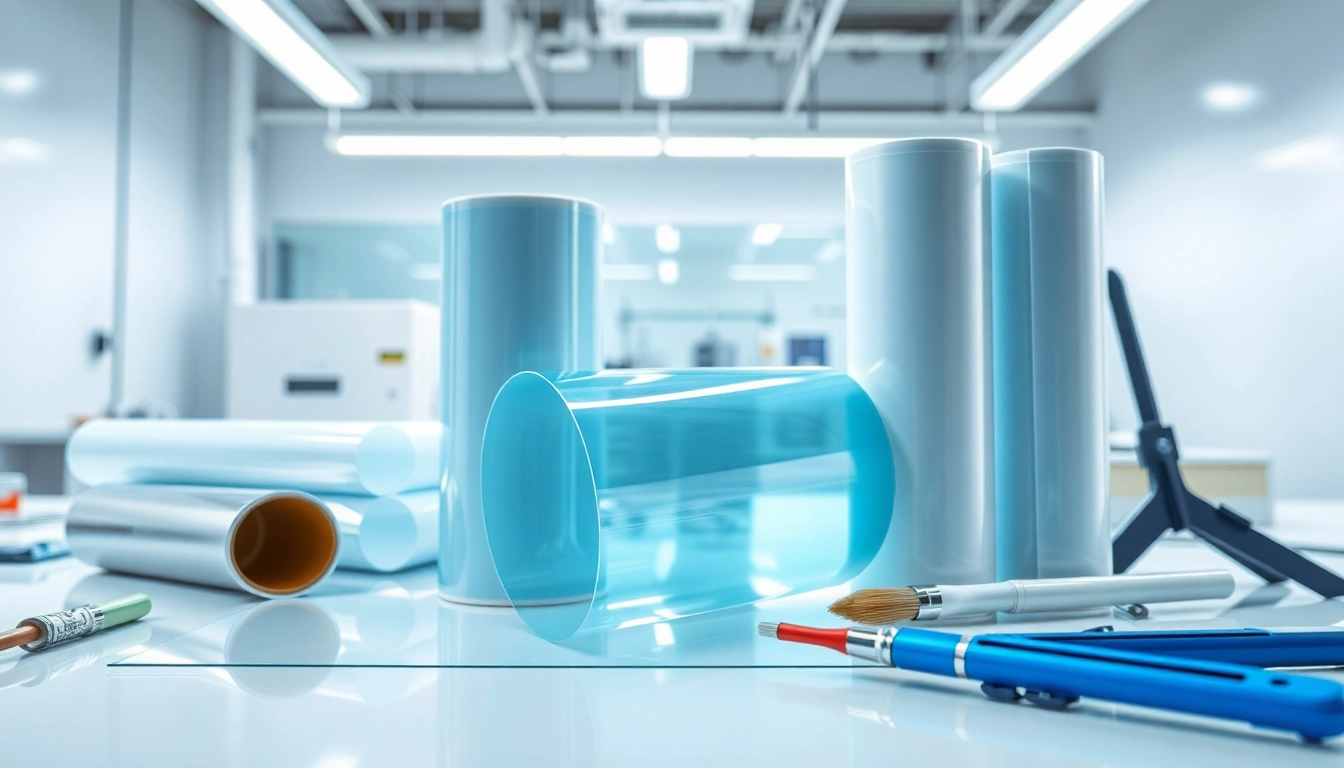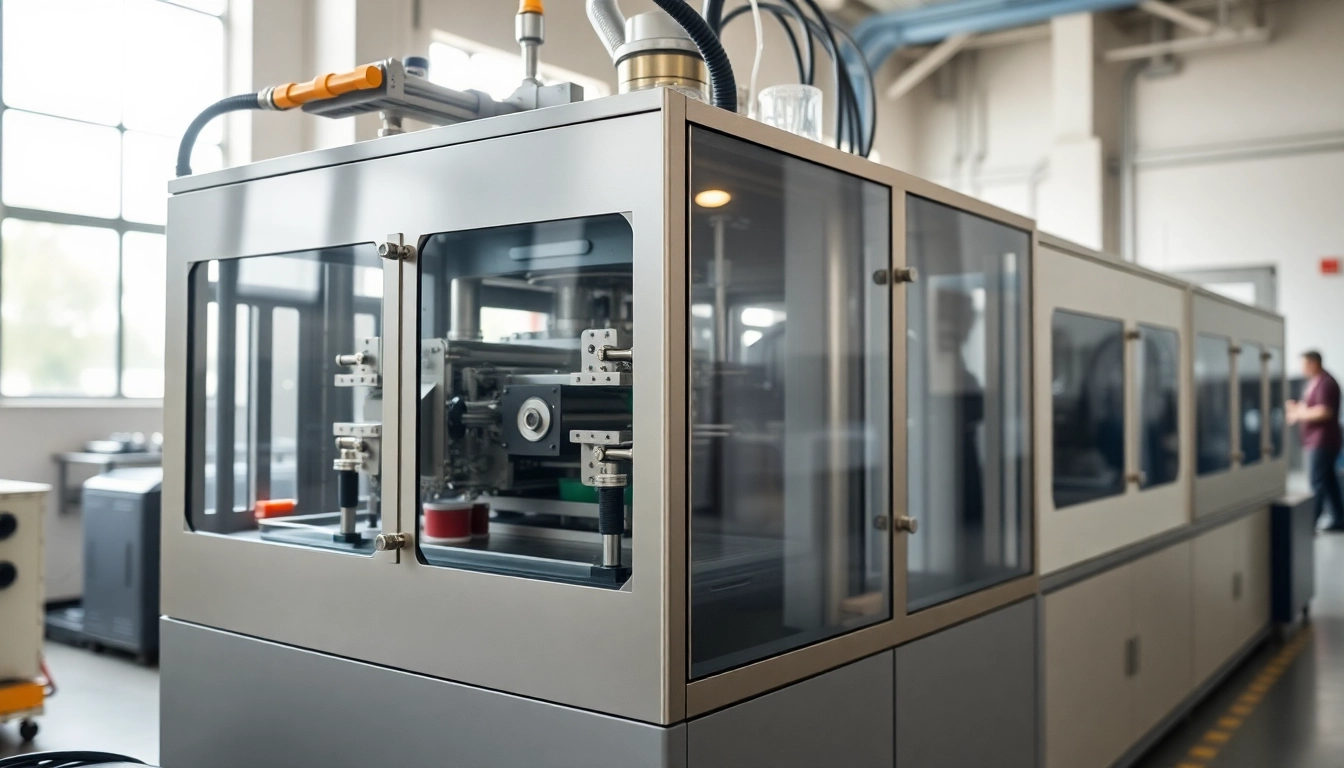Understanding Adhesive Films
Adhesive films are a crucial component in various industries, providing essential bonding solutions for composites, metals, plastics, and more. These specialized films consist of layers of adhesive pre-formed on a carrier film, which activates under heat or pressure to bond surfaces effectively. This technology has evolved rapidly, offering remarkable benefits that support advancements in aerospace, automotive, and construction sectors. For an extensive range of these products, you can explore adhesives films.
What Are Adhesive Films?
Adhesive films are solid adhesive layers that come in a flattened, sheet-like form. They are engineered to provide strong bonding characteristics while being easy to apply. When activated, the adhesive transfers from the film to the substrate, creating a durable bond. These films are particularly advantageous because they minimize mess and offer precise control over adhesive application, leading to cleaner results and fewer defects in the bonding process.
Types of Adhesive Films Available
There are various types of adhesive films, each tailored for specific applications and materials:
- Epoxy Films: Known for their excellent structural strength and temperature resistance, epoxy films are often used in high-performance applications like aerospace.
- Polyurethane Films: These offer flexibility and impact resistance, making them suitable for industries like automotive and marine.
- Silicone Films: Ideal for high-temperature applications, silicone-based films are often utilized in electronics and aerospace.
- Acrylic Films: Known for their excellent UV resistance and clarity, acrylic films are frequently used in architectural applications.
Benefits of Using Adhesive Films
Adhesive films present numerous advantages over traditional adhesive bonding methods:
- Speed of Application: They streamline the bonding process and minimize curing time, allowing for faster production rates.
- Consistency: The uniform thickness of adhesive films ensures consistent application across surfaces, reducing variability in bonding strength.
- Minimized Waste: With precise cuts and minimal over-application, adhesive films significantly reduce material waste.
- Enhanced Performance: Many adhesive films are designed to offer increased resistance to environmental factors such as moisture, chemicals, and extreme temperatures.
Applications of Adhesive Films
Common Industries Utilizing Adhesive Films
Adhesive films are employed in multiple sectors, contributing to innovative solutions in:
- Aerospace: Used in structural bonding applications to assemble lightweight components while maintaining strength and durability.
- Automotive: Used for bonding, sealing, and padding in vehicle parts, enhancing performance and comfort.
- Electronics: Used for attaching components without the mess of liquid adhesives, enabling clearer pathways for electrical connections.
- Construction: Employed in bonding materials for various structural applications to ensure a robust build.
Case Studies of Successful Applications
To illustrate the effectiveness of adhesive films, consider these case studies:
- Aircraft Manufacturing: A leading aircraft manufacturer utilized epoxy-based adhesive films to bond composite wing components. This resulted in reduced assembly time and improved fuel efficiency due to weight savings.
- Automobile Production: An automotive company implemented polyurethane adhesive films to attach interior components. The result was a significant reduction in noise and enhanced durability against vibrations.
- Electronic Devices: A tech firm shifted to silicone adhesive films for sealing their devices, which enhanced water resistance and reliability while reducing assembly errors.
Market Trends in Adhesive Film Usage
The adhesive film market is witnessing robust growth driven by the increasing demand for lightweight materials and the proliferation of advanced manufacturing technologies. Integration with automation and robotics in manufacturing processes is further enhancing efficiency. Additionally, trends such as sustainability are prompting the development of environmentally friendly adhesive film options, positioning them as a preferred choice in numerous industries.
Key Features of High-Performance Adhesive Films
Temperature Resistance and Environmental Stability
High-performance adhesive films are engineered to withstand extreme temperatures, making them vital in applications subjected to thermal cycling. They maintain integrity, elasticity, and bond strength across a wide temperature range. This resilience is crucial for products used in aerospace and automotive applications, where thermal fluctuations are commonplace.
Adhesion Strength and Reliability
One of the standout features of adhesive films is their superior adhesion strength. High-quality films exhibit strong bonding properties, allowing for effective load transfer between substrates. This reliability ensures that structures can withstand operational stresses without failure, which is particularly important in critical applications like aerospace and defense.
The Importance of Thickness and Material Composition
The thickness of adhesive films is tailored to specific applications. Thicker films may offer enhanced damping characteristics or fill gaps between surfaces, while thinner films allow for lightweight solutions that maintain flexural properties. Furthermore, the material composition impacts performance attributes such as flexibility, resistance to chemicals, and moisture permeability, which are key considerations in selecting the correct adhesive film for a project.
Best Practices for Selecting Adhesive Films
Evaluating Your Project Needs
Assessing project-specific requirements is crucial when selecting adhesive films. Consider factors such as substrate types, environmental conditions, load-bearing capacity, and required lifespan of the bond. Collaborating with material specialists can provide valuable insights tailored to project specifications.
Testing and Quality Assurance Protocols
Implementing a robust testing methodology is vital to ensure the selected adhesive films meet performance requirements. This may include peel strength tests, shear tests, and environmental exposure tests to evaluate durability under varying conditions. Establishing a quality assurance protocol also involves regular audits of adhesive film suppliers to confirm compliance with industry standards.
Cost vs. Performance Considerations
Understanding the balance between cost and performance is essential in adhesive film selection. While lower-cost options may be available, ensuring that they meet necessary performance criteria for strength, flexibility, and environmental resistance will ultimately safeguard project outcomes and longevity.
Future Innovations in Adhesive Film Technology
Research and Development Trends
Innovation in adhesive film technology is promising, with ongoing R&D focusing on enhancing adhesive formulations to provide better performance characteristics. Future trends include the development of smart adhesive films that incorporate sensing capabilities and self-healing properties, which would ensure continued performance even after minor damage.
Emerging Technologies in Bonding Solutions
The integration of nanotechnology is creating new avenues for adhesive films, allowing for lighter, stronger materials with improved bonding capabilities. Additionally, advancements in additive manufacturing are facilitating custom adhesive solutions tailored for specific applications, enhancing versatility across multiple industries.
Anticipated Future Market Changes
As industries become more aware of environmental sustainability, the demand for eco-friendly adhesive films will likely surge. These developments will influence production standards and practices, prompting manufacturers to invest in sustainable raw materials and processes that reduce carbon footprints while meeting performance expectations.



